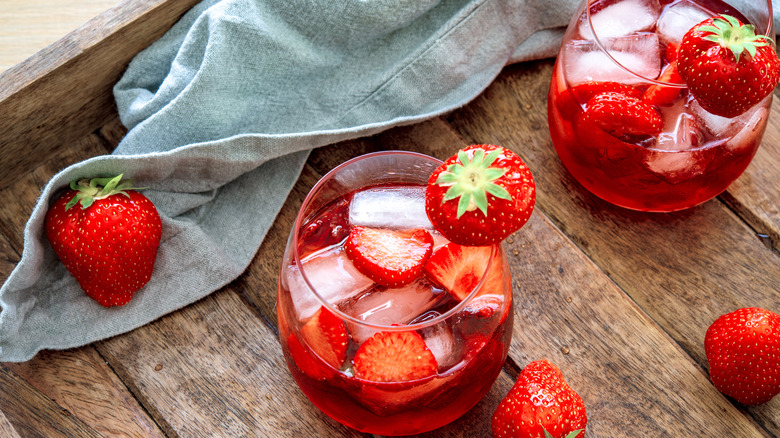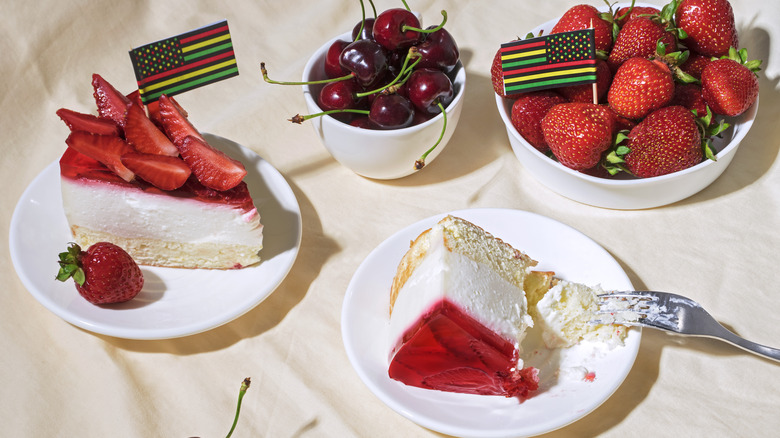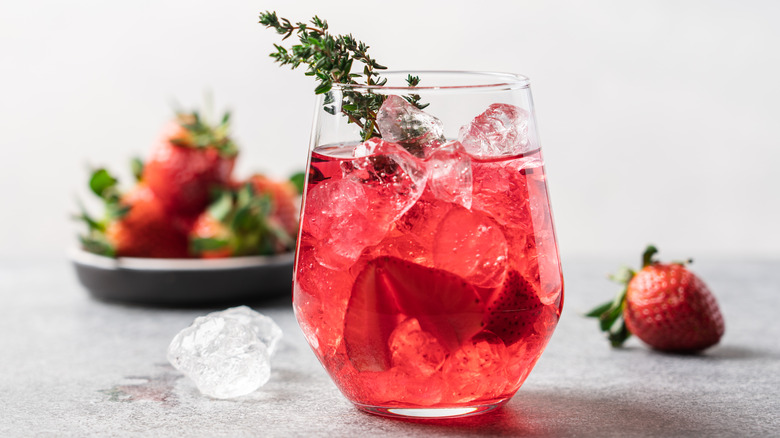How Strawberry Soda Became A Traditional Drink For Juneteenth
Juneteenth marks the day enslaved people in Galveston, Texas, learned about the passing of the Emancipation Proclamation. This happened on June 19, 1865, two-and-a-half years after the law went into effect, freeing 250,000 people. Theirs was the last community to learn of the news, and the historic event sparked an annual celebration.
Not every community observed Juneteenth specifically — many cities, like Washington, D.C., observed Emancipation Day, the ending of slavery locally on the date their residents were impacted. Plus, large swaths of the country were unaware of 'Black Independence Day' or 'Freedom Day,' as Texas's Juneteenth holiday was sometimes called. However, in 2021, President Joe Biden designated the date as a federal holiday, cementing June 19 as a national day of observance. Some states continue to commemorate their own landmark days, but the milestone Texas event of Juneteenth has broader public awareness.
There isn't a 'right' way or single approach to honor the day, but at many celebrations, food and drink play a special role in carrying forward weighty history and cultural practices. In particular, strawberry soda performs this job by evoking red-hued kola nut and hibiscus teas, two beverages long enjoyed in West Africa. Enslavers transported the two ingredients alongside enslaved Africans, which ultimately allowed enslaved people to maintain their recipes and pass them on. Some also attribute the rise of strawberry soda because it was once forbidden to enslaved people, adding to the complex symbolism of the drink for Black Americans.
Serving red foods on Juneteenth
The color of the soda is deeply significant not only for its connection to the past but for its metaphorical significance. The deep shade is a reminder of the blood and pain of slavery, as well as a symbol of resilience and strength that, according to food historian and scholar Michael W. Twitty, ties back to Yoruba and Kongo peoples in West and Central Africa (per Afroculinaria). Indeed, he attributes the wider tradition of serving red foods on the holiday to these cultures. Thought to have strong energy, the color was believed to bestow a spiritual power.
As such, the color's legacy carries on not only through strawberry soda but through foods like red velvet cake and barbecue. Particularly in Texas, where barbecue culture had a stronghold, cookouts on Juneteenth became a central point for festivities. Local dining preferences also influenced the historic consumption of red drinks, as formerly enslaved people drank the strawberry sodas reserved only for enslavers.
Prior to the rise of artificial soft drinks, hibiscus and hibiscus syrup — important ingredients in many African and African Diaspora cultures — pinkened red drinks — while abundant strawberries tinted lemonade. Today, some are returning to these traditional pigments, as others embrace the nostalgia of soft drinks like Big Red, a red-hued berry soda. The bottled drink swept through Texas in the 1930s, and many Juneteenth celebrants still serve the regional pop today. Others preferred the similarly dated Virginia Dare Strawberry Soda, a now-retired offering.
Making strawberry soda from scratch
Today, strawberry soda is easy to stock up on — stores offer a plethora of bottled versions, including the Black-owned Bingo-Bango Fresh Fruit Soda Company. However, it's easy to put a personal spin on the beverage with a few ingredients. To make your own, reduce strawberries, sugar, and water on the stove at a low simmer before straining. This will create a syrup ready for kid-friendly drinks and cocktails. For the fizz factor, anything from clear sodas to prosecco will do the trick. Busy hosts can also buy doctor-up store-bought stuff with a berry puree.
To combine the historical influence and the modern drink, some chefs will brew a pot of hibiscus tea, chill it, and combine it with pureed fresh strawberries. The combination might benefit from a squeeze of lime and a mint sprig garnish. Ginger can add a layer of spice to the fresh mixture, or cooks can draw out sweetness and spice by reducing the fruit into a strawberry black pepper syrup.
Those with juicers at home can keep the process simple and fruit-forward by compressing fresh strawberries, as well as other produce. A mixture of other red-fleshed seasonal items, like blood oranges, plums, watermelon, and cherries, can highlight the color — while tropical pineapple or mango can add a burst of sweetness. Maintain the soda effect with a splash of sparkling water, and, if the beverage isn't sweet or red enough, add a spoonful of fruit punch mix to complete the mixture.



